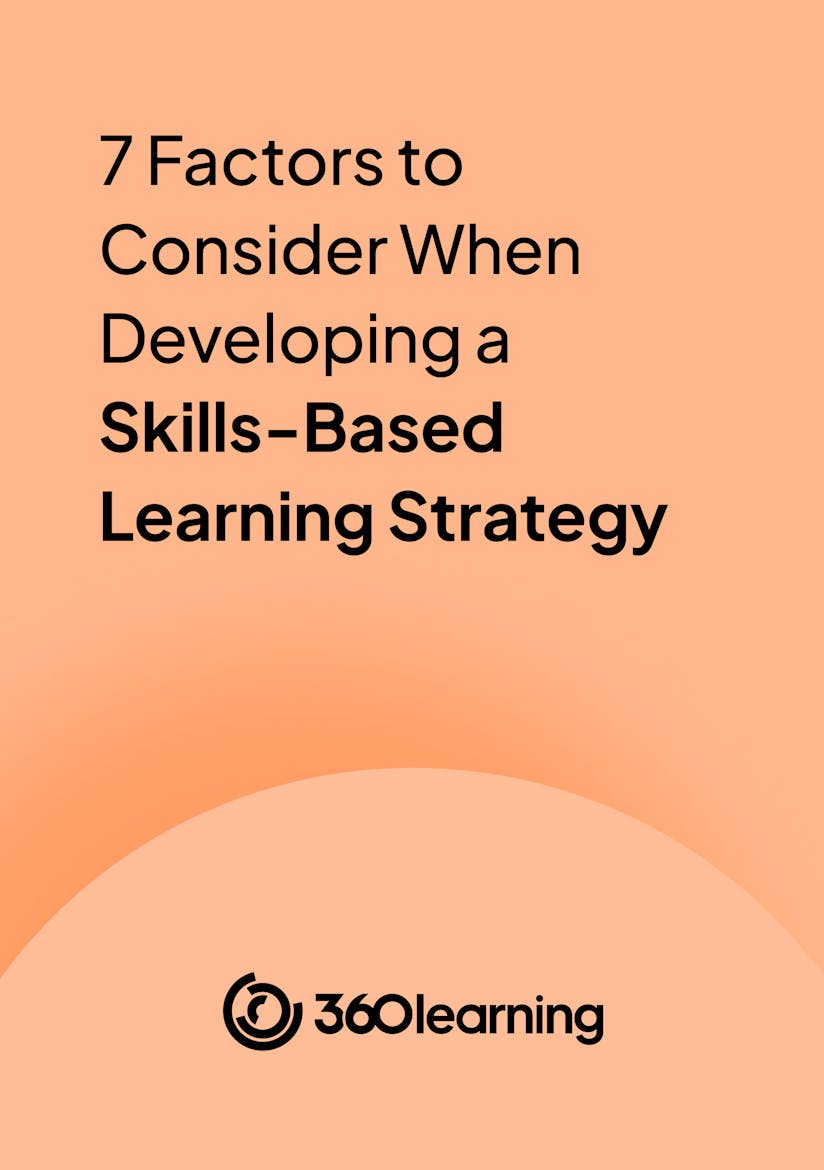Chapter 1: Slow Upskilling is Hindering Employee Performance
With skills-based hiring on the rise, the place that most companies look to for talent is changing…again. Between the mid-1940s through the 1970s, corporations filled around 90% of their job vacancies through internal promotions and lateral assignments. But by 2019, this same figure dropped to just 30% or less.
Since the 1980s, low employee retention across the board has driven up talent acquisition costs to record highs. Many companies have defaulted to hiring externally because it seems easier with minimal employee training, as the majority of new hires are expected to already possess the skills companies are seeking.
Now, the skills that companies need are changing faster than external hires can keep up with. A consequence of this reliance on external hiring is that internal development and career paths within a company have taken a backseat…to the detriment of most organizations and their employees.
Growing skill shortages, shorter shelf-life of skills, and record turnover rates are making companies realize that outsourced and external talent acquisition are no longer enough to obtain the skills and knowledge they need to succeed.
Growing skill shortages, shorter shelf-life of skills, and record turnover rates are making companies realize that outsourced and external talent acquisition are no longer enough to obtain the skills and knowledge they need to succeed.
This was closely reflected in our survey results. In the US and France, around 45% of senior professionals working in talent teams express that one of their biggest challenges is the inability to “find enough new hires with the skills they need”.
And in the UK, companies are struggling to retain younger talent, with 63% of organizations facing “higher turnover of younger members of the workforce” as their biggest obstacle in the skills shortage.
The good news is, companies are now recognizing that re-focusing on internal upskilling and reskilling can help overcome the challenges posed by the current labor market. In other words, talent teams are increasingly looking within their organizations to fill critical skills gaps and shift towards skills-based learning.
As Peter Sheppard, Head of Global L&D Ecosystem at Ericsson explains, "If you can upskill and reskill your existing employees, then that's cheaper than recruitment. Sometimes L&D teams don’t push hard enough for internal upskilling. At the end of the day, it is more cost-effective, more engaging, and has more effect on retention."
This growing trend towards internal hiring was validated in our own survey data. In the UK, US, and Germany, half of respondents or more have: a 50/50 approach to internal and external hiring, are mostly hiring internally, or are exclusively doing internal mobility.
"If you can upskill and reskill your existing employees, then that's cheaper than recruitment. Sometimes L&D teams don’t push hard enough for internal upskilling. At the end of the day, it is more cost-effective, more engaging, and has more effect on retention." - Peter Sheppard, Head of Global L&D Ecosystem at Ericsson

It’s only in France that the figure is slightly lower, where 47% of respondents are still focusing mostly on hiring externally, versus 44% who focus on internal hiring.
A major issue today is that these efforts to develop and enable internal mobility take time, and many companies are struggling to upskill and reskill fast enough for employees to move onto their next position within the company.
According to survey participants in the UK, this hurdle is notably pronounced, with 61% respectively acknowledging its presence. The situation differs in the other countries where respondents expressed fewer concerns about their ability to upskill and reskill at a rapid pace.
Another bottleneck preventing talent teams from employing internal mobility at their organizations is a lack of skills assessment in their current employees. Over half of respondents in the UK and 45% of respondents in the US said they struggled to understand employee skill levels versus their current or next role.

This lack of scalability makes it difficult to deploy upskilling initiatives that help build organizational resilience and agility. With the proliferation of new AI technologies, executives are increasingly aware of skills shortages. But employers need to know what skills they have in their organization to start with and simultaneously, employees need to be able to declare what exact skills they need to get the job done–and receive the right training at the right time.
So, it seems that just as fashion trends inevitably recycle, so too do hiring strategies. The survey results covered in this chapter suggest that companies are on the right track to tackling the skills gaps by increasing their focus on internal movement. The problem is, they’re just not quite there yet.
What’s clear are the organizational benefits of upskilling and reskilling from within. It boosts retention, and is a faster and more cost-effective way to meet the demand for emerging skills, compared to outsourcing or hiring externally.
But to do it successfully, companies have to do more than just talk about upskilling and reskilling. They need to create the right infrastructure and processes to support and enable this kind of growth and career progression from within.
But to do it successfully, companies have to do more than just talk about upskilling and reskilling. They need to create the right infrastructure and processes to support and enable this kind of growth and career progression from within.

Guarantee a successful move to skills-based L&D
By providing your contact info, you agree to receive communications from 360Learning. You can opt-out at any time. For details, refer to our Privacy Policy.

